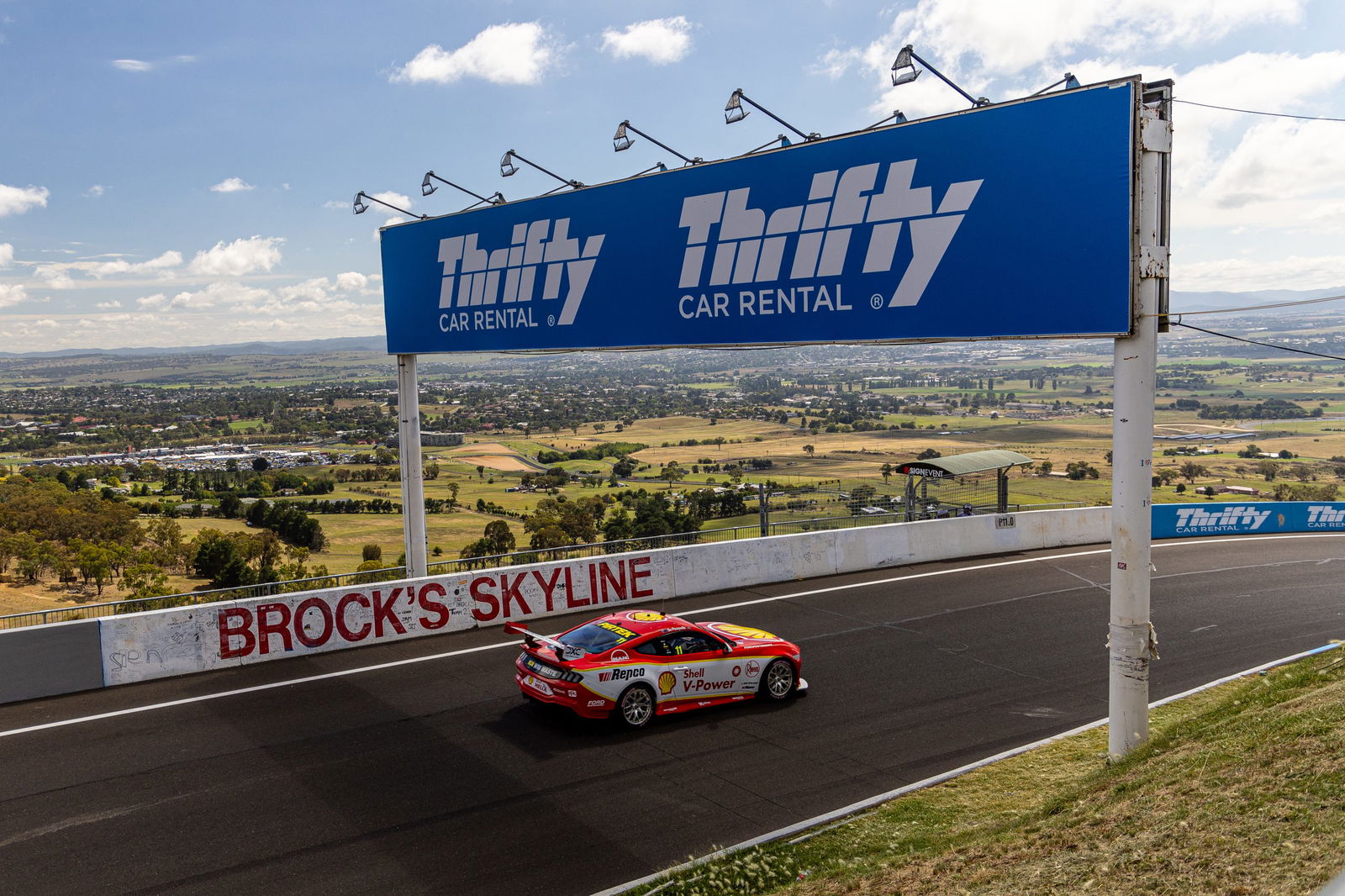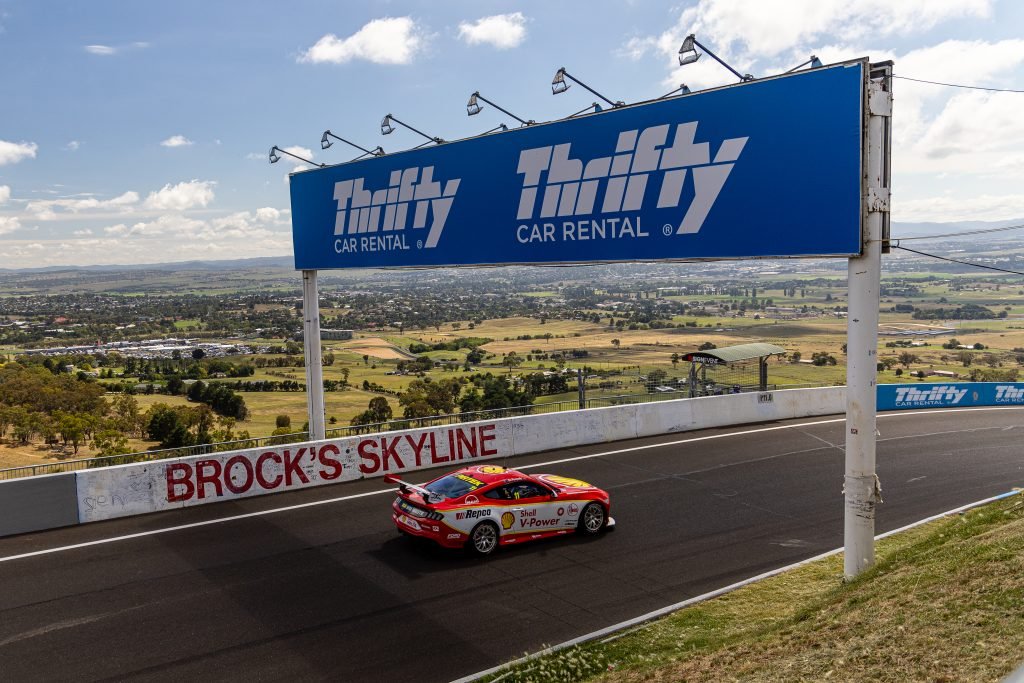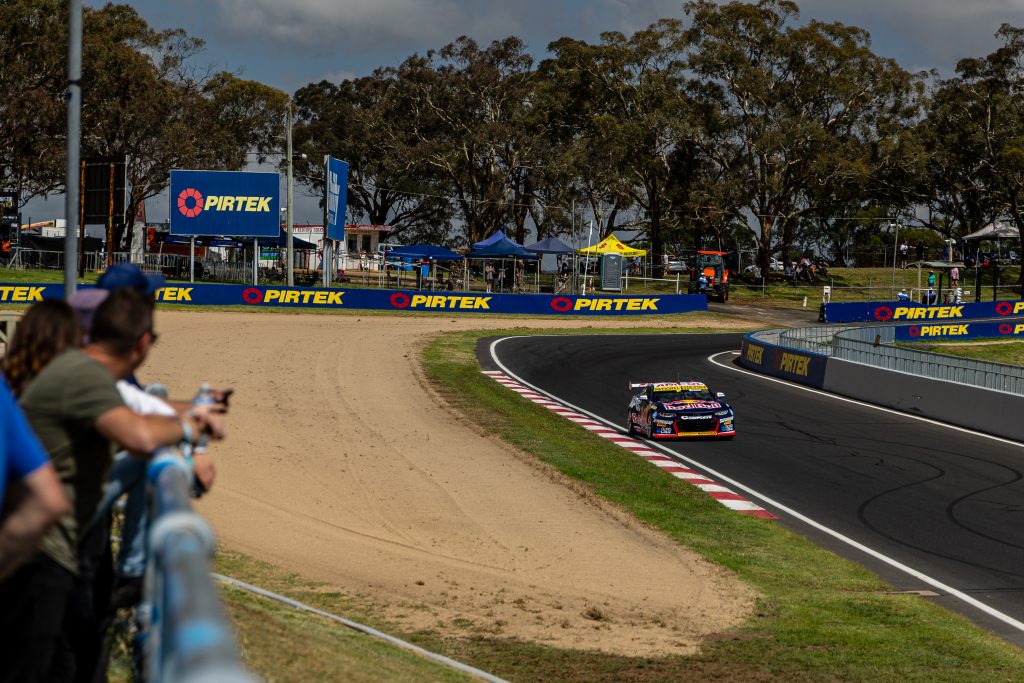

The category is this weekend conducting further engine validation work by way of ‘demonstration’ sessions at the Repco Bathurst 12 Hour, for which homologation teams Triple Eight Race Engineering (Chevrolet Camaro) and Dick Johnson Racing (Ford Mustang) have each provided a car and driver.
That activity has raised questions about engine parity, while there had also not been confirmation on the aerodynamic front, notwithstanding two off-season visits to a wind tunnel in the United States and teams having rolled out for testing with new bodywork in recent weeks.
Despite suggestions from within the paddock that ‘parity’ might only be declared on a holistic basis – treating engines and aerodynamics as a package (notwithstanding parity would need to be achieved on each front) – and conjecture about the so-called ‘sign-off’ process, the championship has now provided an update to Speedcafe on those matters.
“Homologation Teams don’t sign off on homologation, that’s Supercars responsibility to do so,” said a Supercars spokesperson.
“We have signed off on aero parity, earlier this week we also signed off on the revised Ford engine spec not exceeding AEP.
“We’re continuing to test to ensure technical parity.
“This weekend’s running of both the Camaro and Mustang will give us further data from a circuit with many different characteristics.”
The first point is a notable one because of the necessarily collaborative approach between each homologation team and Supercars’ Motorsport department in achieving technical parity.
While the championship referred to agreement between those parties when it announced formal homologation of the Gen3 race cars on the Wednesday immediately prior to last year’s season opener in Newcastle, a declaration of parity is in fact ultimately a decision for Supercars.
That aero parity has been signed off by Supercars is, arguably, not especially surprising considering the investment in wind tunnel testing, which is considered world’s best practice and regarded by most, if not all, as a step up on the VCAT process upon which the category previously relied (along with CFD analysis).
However, the comment regarding engine spec is quite noteworthy.
Supercars has not confirmed it has signed off on engine parity as such, but rather that the new specification of Ford engine does not produce too much power.

That squares with Speedcafe’s understanding that the Ford camp had been told to slow down its new engine following the start of pre-season testing.
It is possible that the 5.4-litre Coyote-based unit came to be too powerful and/or that its transient performance had improved beyond the deficit it is claimed to have had relative to the ‘LTR’ which propels the Camaros.
‘AEP’ stands for ‘Accumulated Engine Power’ and is the sum of the power generated at specified points in the rev range.
Supercars also uses ‘EPWA’ (Engine Power Weighted Average), which category engine expert Craig Hasted previously explained, in a video publish via its own website and social media channels, as follows:
“What that does, that ensures that the curve is in a similar position.
“That way, it stops someone from making a whole heap of power at 6000 and less at 7500, and vice versa, at different tracks.”
Of course, that Supercars had cars running this weekend at Mount Panorama with torque sensors and “other non-standard sensors” for “further data collection” (which may or may not refer to the pitot tubes observed by Speedcafe) already pointed to the likelihood that engine parity had not yet been signed off.
The exercise has, however, been welcomed by certain figures across both sides of the brand divide for providing extra rigour to the engine parity project, noting that Mount Panorama has long straights and – unlike Queensland Raceway or an airstrip – steep climbs.
It is an activity being conducted in lieu of transient dynamometer testing, which has not been feasible because of the intensity of work on the Ford engine which has carried into the month of the season-opener.
That work is understood to have encompassed both software and hardware, as evidenced when DJR back-to-backed two different physical engines at Queensland Raceway.
The third and final Supercars demonstration of the Bathurst 12 Hour weekend will take place this morning at 09:20 local time/AEDT.




















Discussion about this post